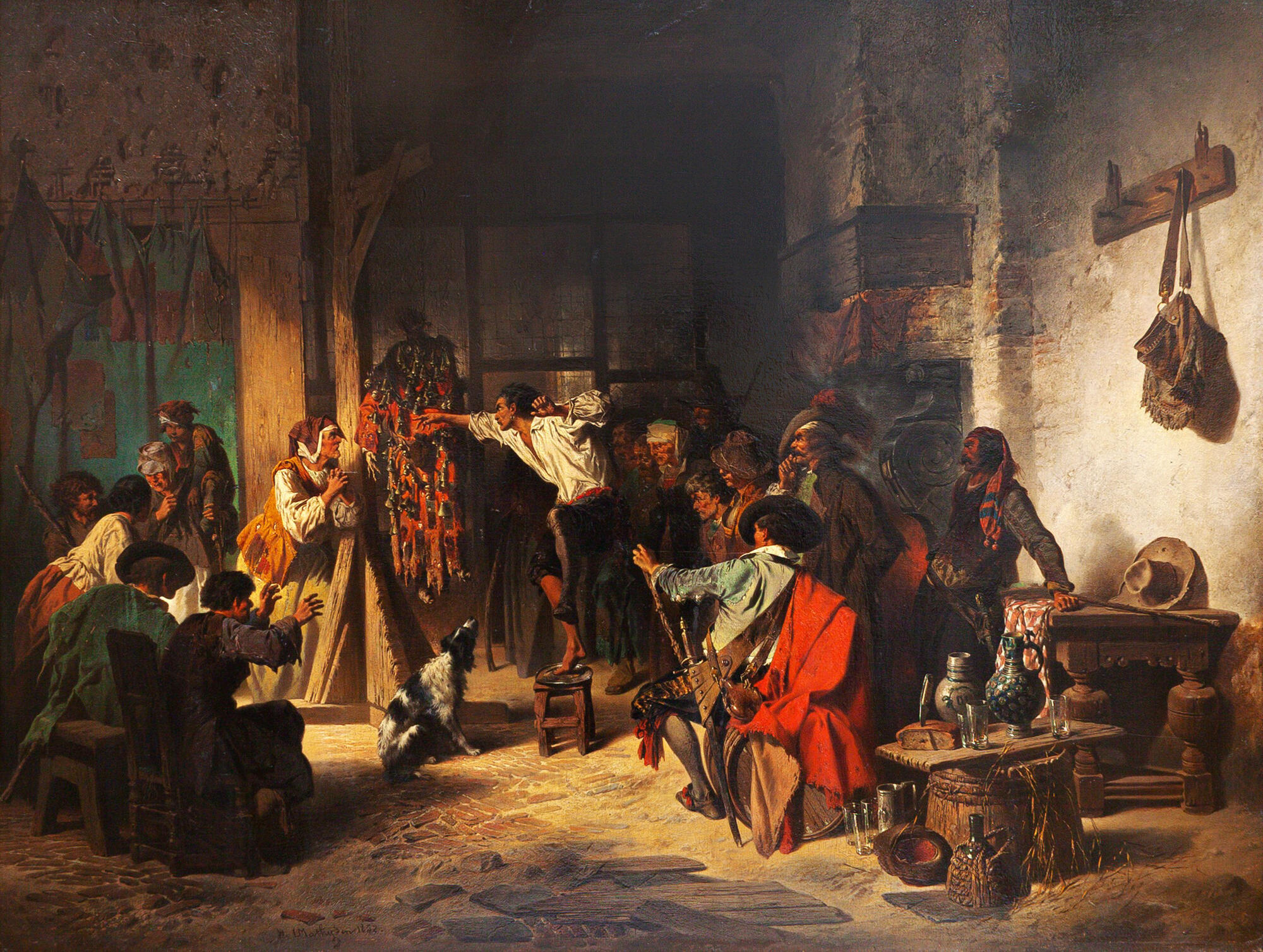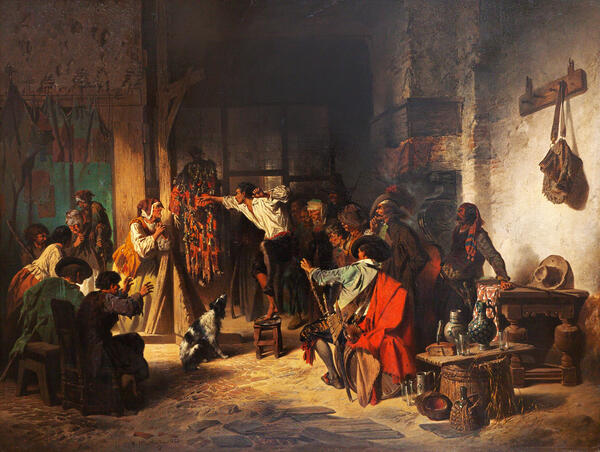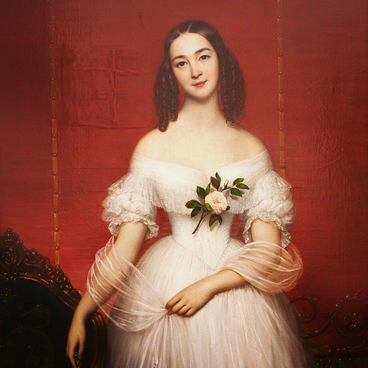Little is known about the author of the painting ‘School of Thieves’ I. M. Mateisen. Even the name and years of the artist’s life are unknown. Researchers established that Mateisen participated in the 1850 exhibition in Antwerp, thus, he probably was a representative of the Belgian school of painting.
The artist’s works that have survived to our days are examples of the so-called literary painting. Its representatives both illustrated famous works and created artworks based on literary materials, depicted characters or images from popular novels, plays and short stories. Often artists expressed their own opinion on different characters in their canvases.
The painting ‘School of Thieves’ is inspired by Victor Hugo’s novel “The Hunchback of Notre-Dame”. The novel starts with Clopin who disrupts a performance based on the play by poet Pierre Gringoire in the Palace of Justice, begging the audience for money. Later that night, Gringoire encounters him again in the Court of Miracles, where Clopin is revealed not as a beggar, but as the King of Truands, Parisian criminals and outcasts. Clopin accuses Pierre of entering the Court without permission and threatens to hang him. The poet asks to be accepted into the community, but fails the test: he cannot take a purse from the pocket of a suspended dummy, hung all over with tiny bells, without making the bells sound. At the last moment, the beggars remember that by law Pierre must ask if there is a woman present who will marry him. It might overturn his verdict. Esmeralda agrees to become the poet’s wife.
Romantic-artist Mateisen chose the most acute moment of Gringoire’s encounter with the beggars — the test of poet’s skills. The tension of the situation is conveyed by expressive means, characteristic of Romanticism: the dynamic composition, saturation of color, contrast of light and shadow.
This painting belonged to the famous collector and book publisher Kozma Soldatyonkov. After his death, more than 250 canvases, 20 sculptures and several hundred sheets of graphic works were transferred to the Rumyantsev Museum. Soldatyonkov also donated his library — 8 thousand books and 15 thousand magazines.
In his will, the patron wished that his art collections were displayed in one room, and were named ‘Soldatyonkov’s collection’. The value of the collection and the library amounted to about half a million rubles. At the beginning of the 20th century, for this sum one could buy 250 cars: even the fleet of Nicholas II had only 60 cars.
The era of the Rumyantsev Museum ended with the establishment of Soviet power. The museum building and its library later became the Lenin Library (presently — the Russian State Library). The paintings, drawings and sculptures were transferred to the Tretyakov Gallery, the Pushkin Museum and regional museums; the antiquities were sent to the Historical Museum.
Thus, the canvas “School of Thieves” from the Rumyantsev Museum was housed in the State Museum of Fine Arts, and in 1932 it was transferred to the Tomsk Museum of Local Lore, from where it was moved to the Tomsk Regional Art Museum in 1982.
School of Thieves
Creation period
1852
Dimensions
66x87 cm
Technique
wood, oil
Collection
Exhibition
12
Open in app#1
Mateisen I.M.. — Mathysen I.M.
School of Thieves
#2
#3
Ministry of Culture of the Russian Federation
read morehide
00:00
00:00
1x
School of Thieves
Creation period
1852
Dimensions
66x87 cm
Technique
wood, oil
Collection
Exhibition
12
Open in app
Share



